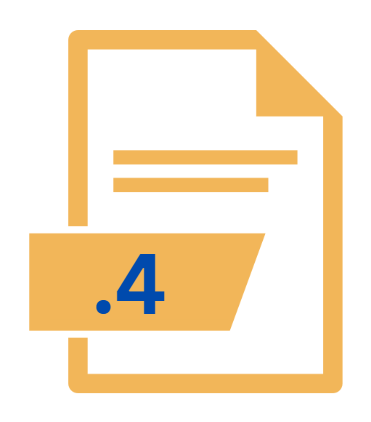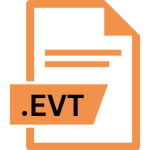.4 File Extension

Unix Section 4 Manual Page
| Developer | Update Soon |
| Popularity | |
| Category | System Files |
| Format | .4 |
| Cross Platform | Update Soon |
What is an 4 file?
The .4 file extension is associated with Unix Section 4 manual pages, a vital component of Unix-like operating systems.
These files are part of the extensive Unix manual system, which is used to provide detailed documentation about system commands, library functions, and various aspects of the operating system.
Specifically, Section 4 of the Unix manual pages covers topics related to system calls, device drivers, and hardware interfaces.
More Information.
The Unix manual pages were introduced as a way to offer comprehensive documentation in a consistent format.
The .4 file extension was used to denote documents in Section 4, which focuses on device drivers, kernel modules, and system calls.
This section is essential for understanding the interaction between software and hardware in Unix-like systems.
Historically, as Unix evolved and spread to various platforms, the structure of the manual pages remained largely consistent, though there were modifications to suit different versions of Unix and its derivatives.
The purpose of Section 4 remains to provide in-depth information about the internals of the operating system that are crucial for developers working with low-level system components.
Origin Of This File.
The .4 file extension originates from the Unix operating system, which was first developed in the 1970s by AT&T’s Bell Labs.
Unix was designed to be a multiuser, multitasking operating system, and its manual pages (man pages) were created to help users and administrators understand and utilize its vast array of features.
The manual pages are divided into sections, each covering different types of documentation. Section 4, in particular, deals with kernel interfaces and hardware-related documentation, providing crucial information for developers and system administrators working with Unix-based systems.
File Structure Technical Specification.
Files with the .4 extension are typically formatted in a troff/groff-based markup language, which is a text formatting system used for formatting man pages in Unix.
The content of these files is usually written in a structured manner, following the conventions of the troff/groff macros specific to man pages.
Structure:
- Header: Contains the name of the manual page, section number, and date.
- Synopsis: Provides a brief overview of the system calls, devices, or functions described in the manual page.
- Description: Offers a detailed explanation of the functionality, parameters, and usage.
- Files: Lists any related files or paths.
- See Also: References other related manual pages or documents.
- Author: Provides information about the author or the source of the documentation.
- Index: Sometimes included, providing an alphabetical list of terms mentioned in the page.
Technical Specifications:
- Format: The primary format used is troff/groff, but newer systems may use different text formatting tools while maintaining the
.4extension. - Encoding: The files are typically encoded in ASCII or UTF-8, depending on the system and the character set used.
How to Convert the File?
Converting .4 files to other formats typically involves transforming the troff/groff formatted text into a more universally readable format. This can be done using various tools:
- Man to HTML/PDF Conversion: Tools like
man2htmlorman2pdfcan convert Unix manual pages into HTML or PDF formats for easier reading and distribution. - Troff to Plain Text: The
groffcommand-line utility can convert.4files into plain text or other formats. For example,groff -man -Tascii file.4will output the file in ASCII text. - Markdown Conversion: For integration into modern documentation systems, converting to Markdown might be useful. Tools like
pandoccan assist in this conversion, though it may require additional scripting to handle Unix-specific formatting.
Advantages And Disadvantages.
Advantages:
- Standardization: The
.4files follow a standardized format, making it easier for users to find and understand system-level documentation across different Unix-based systems. - Detailed Information: They provide comprehensive details on kernel interfaces and device drivers, which is crucial for system administrators and developers.
- Consistency: Using man pages ensures consistency in documentation, which is beneficial for troubleshooting and development.
Disadvantages:
- Complexity: The technical nature of the documentation can be complex and challenging for users unfamiliar with system-level programming.
- Formatting Issues: While the troff/groff format is powerful, it can be difficult to work with and may require specialized tools to view or edit.
- Limited Accessibility: The
.4files are specific to Unix-based systems, and users on non-Unix systems may have limited access to this documentation without appropriate tools or emulators.
How to Open 4?
Open In Windows
- Viewing: Windows does not natively support Unix-style manual pages. To view
.4files, you may need to use Unix-like environments such as Cygwin or Windows Subsystem for Linux (WSL). - Editing: For editing, you can use text editors that support Unix file formats, such as Notepad++ or VS Code with appropriate extensions.
Open In Linux
- Viewing: On Unix-like systems,
.4files can be viewed using themancommand. For example,man 4 <filename>will display the manual page if it is in the correct directory. - Editing: Use text editors like
vi,nano, oremacsto edit.4files. Ensure you have the necessary permissions to modify these system files.
Open In MAC
- Viewing: macOS also supports Unix-style manual pages. You can use the
mancommand in the Terminal to view.4files. - Editing: Text editors like
TextEditornanocan be used to edit.4files, similar to Unix/Linux systems.











